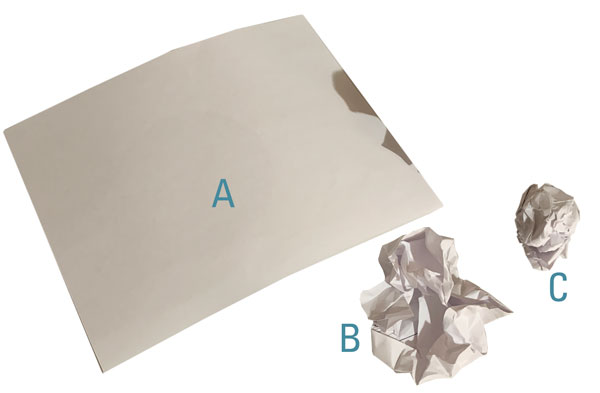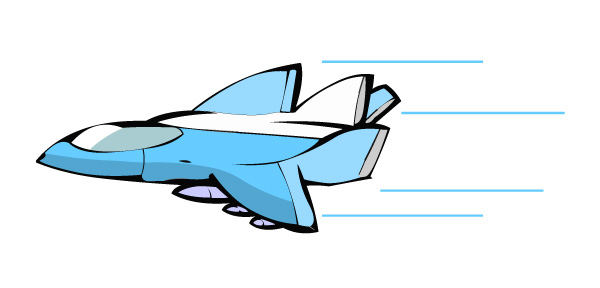- Forces
Air resistance
Let’s consider this quick experiment:
Find three letter-size sheets of paper (or 3 A4-sheets).
Keep the first sheet (A) free from folding. Crush the second sheet (B) a bit, and crush the third sheet (C) into a small lump. Now, take the pieces of paper to the highest floor in your school and let the three paper specimens drop to the ground.
Which one fell to the ground first? Which one was last to reach the ground?
Between the ground and the highest point, there is air. The pieces of paper had to find their way down through the air. The smallest had very little work to do because it was small. The larger surface paper had more work to do because its large surface area meant that it had to work harder to overcome the air resistance. As the objects fell to the ground, the air was trying to prevent them from falling. That was air resistance.
Moving objects like aircraft, cars, and arrows experience air resistance when they are in motion. Frictional forces of the air against the moving object cause this resistance. There is more resistance with faster movement and less resistance with slower movement.
Note that the bigger the surface area an object has, the greater the air resistance. That is why airplanes and fast trains have pointed heads to help overcome air resistance. 
Have you seen bike riders in a race? They wear smooth clothing and helmets designed to overcome resistance. This makes them glide through the air at top speed.
